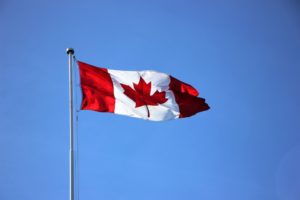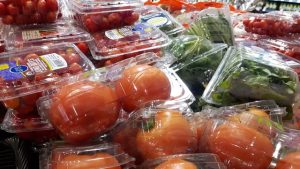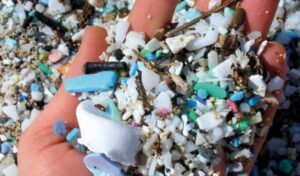- Regulatory Tools
- Circular Economy
- Government
- Government Policy
- Labelling
- Recycling
- Policy
- Strategy and Policy
- Take Action
- National
Plastic pollution in Lake Huron: Part I of a series
Almost 4,700 kilotonnes of plastics are introduced into the Canadian market annually. That’s more than 125 kg per capita. Only nine percent of plastic waste is recycled and 86 percent ends up as waste in our landfills, according to a report prepared for Environment and Climate Change Canada by Deloitte LLP. A lot of that plastic waste ends up in our lakes and on our shorelines.
“We actually have a higher density of plastic pollution in the Great Lakes than is found in many of the oceanic gyres (the Great Pacific Garbage Patch, for example),” according to Hannah Cann, coastal stewardship co-ordinator for the Lake Huron Coastal Conservation Centre (LHCCC). “There’s some pretty interesting statistics and the numbers are quite shocking,” she said. “A single load of laundry can release thousands of microfibres which then can end up in Lake Huron.”
“There are many studies now on microplastics which are very, very small manmade fibers, basically lint that comes out of your washing machine, all the way up to 2.5 cm in size and then you get to mega plastic that are very large, like some of the large pieces of foam we’ve found in the Georgian Bay area.”
Plastic pollution is divided into different size categories and researchers study plastic generally based on those categories.
The most common items that are washing up, actually 70 to 80 percent of the shoreline litter that is collected, are actually composed of plastic. That can be anything from a fishing net or fishing line to disintegrating children’s beach toys to cigarette butts. “These are all commonly found plastics along Lake Huron’s beach coast,” Cann said. “The filters of cigarette butts are actually composed of very small fibers of plastic.” Cigarette butt filters are one of the most if not the most found items across the country for shoreline pollution; cigar mouth tips and lighters are also common.
Cigarette butts can cause serious contamination, Ms. Cann added. “It’s amazing how these small items of plastic will solar degrade because of the plastic and then will also become a magnet for different substances, whether that’s chemicals, nutrients and other things that wash into the lake from other sources.”
July is Plastic Free July on a global scale, noted Ms. Cann. “This is a good opportunity for us to analyze how much plastic we’re purchasing, whether that is goods or packaging or grocery bags.” The first step is to reduce the amount of plastic that we buy, whether by encouraging producers to move away from packaging materials in plastic or to consume less.
The next step is reducing the potential for introduction into our environment. That can be reusing items more frequently or repurposing items once their lifespan is done and then going through the recycling process. We can ensure that receptacles all across our coastal areas are efficient enough to contain the garbage or we can encourage people to utilize the “pack in, pack out” principle: when you go to a provincial park or protected area or even just your local shoreline, expect to carry your garbage back out.
The third step is clean it up from the environment. This is the most expensive of the three methods and also the most resource intensive both from a physical and a financial perspective. She pointed to a study from 2015 that calculated it would cost $400 million annually to completely eradicate plastic pollution from the Great Lakes.
“The least costly method is changing the way we shop, changing the items that we buy and then the most expensive is cleaning it up out of the environment. What people can do to reduce microplastics in the environment is to go out and participate in a shoreline cleanup or hold your own, submitting your data to the GCSC website or just by changing the way we buy things, by understanding that higher quality items might have a higher price tag up front but they will hopefully last longer and will be more efficient in our recycling system in the long run.”
Read the full article at Manitoulin.ca



